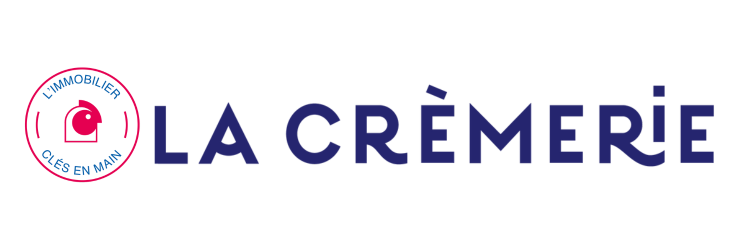emergency-board-up-solutions5694
emergency-board-up-solutions5694
The 10 Scariest Things About Commercial Boarding Up
Commercial Boarding Up: A Comprehensive Guide
In the business world, security is critical. Whether dealing with a retail shop, workplace building, or warehouse, safeguarding physical properties is essential, particularly in times of crisis. One significant preventive measure businesses can take is boarding up their premises. This short article checks out the concept of commercial boarding up, including its benefits, methods, and best practices for execution.

What is Commercial Boarding Up?
Commercial boarding up refers to the procedure of momentarily securing windows and doors of commercial properties by covering them with panels or boards. This practice is frequently made use of throughout emergency situations such as natural disasters, vandalism, or renovations, or when a business leaves an establishment vacant for a prolonged period. The ultimate aim is to avoid unauthorized gain access to, hinder theft, and safeguard property versus damage.
Why is Commercial Boarding Up Necessary?
The need for Commercial Boarding Up – Co00980-Wordpress-15.Tw1.Ru, frequently develops for several factors:
-
Natural Disasters: Hurricanes, tornadoes, and serious storms can trigger significant damage to buildings through high winds and flying debris. Boarding up can reduce possible damage to windows and doors.
-
Vandalism and Theft: Unsecured premises are vulnerable to burglaries and vandalism. Boarding up can discourage criminal activity and safeguard important stock and equipment.
-
Building and construction and Renovations: During refurbishment, it might be required to limit access to particular locations, ensuring safety and security.
-
Long-Term Vacancies: Unoccupied buildings can end up being targets for squatting or breaking and going into. Boarding up deals protection up until the property can be secured or repurposed.
Methods of Commercial Boarding Up
There are numerous methods to board up a commercial property efficiently. These can vary based upon the size and structure of the building, the level of security required, and the duration for which the boards should remain in place.
Typical Boarding Materials
| Material | Functions | Best Used For |
|---|---|---|
| Plywood | Strong and easily offered | Short-term boarding, high danger |
| OSB (Oriented Strand Board) | Cost-effective, good strength | Short to medium-term boarding |
| Metal Sheets | Very long lasting, fireproof | High-security needs, long-term |
| Lexan or Polycarbonate | Light-weight, impact-resistant | High-security glass replacement |
Installation Techniques
-
Screw and Anchor: Secure the boards to the window or door frames using screws that penetrate deeply into the wall for stability.
-
Brackets: Use brackets to reinforce the boards, especially for larger openings.
-
Secure with Bolts: In high-risk locations, bolts can be used for included security, guaranteeing that boards can not be easily gotten rid of.
-
Frame Construction: For prolonged exposure, building a frame to hold the boards rather of connecting straight to the structure can be useful.
Temporary vs. Permanent Boarding Up
While a lot of boarding up practices are planned to be temporary, there are cases where permanent or semi-permanent solutions may be needed. It is necessary to assess the private needs of the property and purpose of the boarding up.
Best Practices for Boarding Up
To guarantee the efficiency of commercial boarding up, certain best practices must be followed:
-
Assess vulnerabilities: Identify all points of entry and assess the weaknesses that might be made use of during a crisis.
-
Utilize the ideal materials: Choose the suitable boarding products based on the level of threat and period of boarding up.
-
Professional setup: For larger or heavily impacted residential or commercial properties, engaging professional services can ensure superior security and compliance with local regulations.
-
Maintain secure access points: Even while boarding up, ensure that you have secure access points for emergency services, if necessary.
-
Regular examinations: Periodically examine the boarding to ensure it stays secure and undamaged, specifically after storms or high winds.
Frequently Asked Questions About Commercial Boarding Up
What is the perfect density for plywood boarding?
A density of at least 1/2 inch is suggested for plywood boarding up to guarantee it can withstand high winds and impact.
How can I remove boards after setup?
Normally, loosening the boards or getting rid of bolts need to permit easy elimination. Nevertheless, it is essential to have the appropriate tools on hand.
Can I board up my business myself?
Yes, numerous businesses choose to board up themselves; nevertheless, it is often suggested to hire experts for bigger homes or in high-risk scenarios.
The length of time can boards remain up?
The time boards can stay in location depends upon numerous aspects, including local ordinances, the security needed, and physical conditions affecting the property.
How do I secure my business from prospective vandalism when it is closed?
In addition to boarding up, think about installing security electronic cameras, lighting, and alarm systems to boost the total security of your property when closed.
Commercial boarding up is a tactical technique to safeguarding services from various possible threats, consisting of natural catastrophes and criminal activity. By comprehending numerous methods, materials, and finest practices, company owner can enhance the security of their properties, alleviate damage, and make sure the security of their assets. While the procedure might seem simple, proactively participating in extensive preparation and assessment might yield the finest lead to securing a business’s most crucial financial investments.




